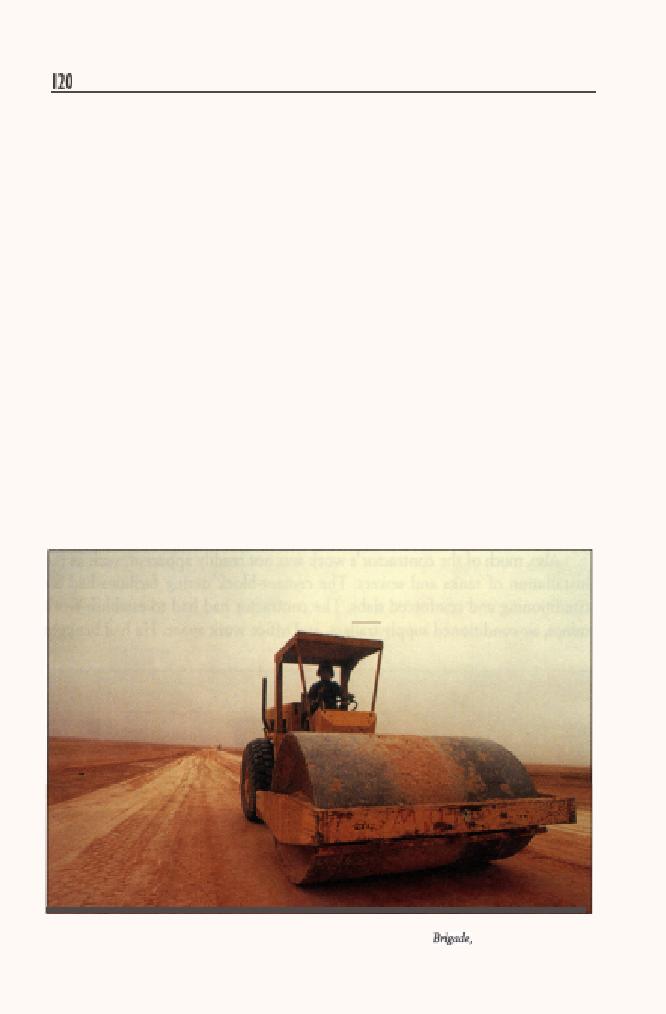
U.S. Army Engineers in the Gulf War
in generators and provided running water. The road construction element had
been taken out of the contract, but the contractor had built crude roads to bring
in his equipment. The contractor worked on roads for 60 days and used what
amounted to a platoon's worth of equipment-four dump trucks, two
bulldozers, a bucket loader, a road grader, and compaction equipment-adding
considerably to his cost.19 Given the amount of work that the contractor
performed and his expenses, the costs of the life support areas were probably
reasonable.
Main Supply Routes
The construction of main supply routes was critical for logistics support and
for moving troops. Initially engineers paid little attention to theater planning for
main supply routes because the existing highway network in Saudi Arabia gave
adequate support during the initial deployment phase. Main supply route Audi,
a good multilane road, stretched from Dhahran along the coast to just north of
Jubail. Dodge (T a pl ine Road) ran northwest from Audi to Hafar al Batin and
then across Saudi Arabia. Two major southern routes were Toyota and Nash.
Toyota was an excellent multilane road that ran between Dhahran and Riyadh,
and Nash ran north from Riyadh to Hafar al Batin where it intersected with
Dodge. Some roads were in good shape initially, but none could withstand the
high volume of military traffic. Few secondary roads existed. Forward logistics
Soldiers from the 20th Engineer Brigade compact the ground for a new road in Southwest Asia.
(U.S. Army photo by SSG Martello, 20th Engineer
Public Affairs Office)



 Previous Page
Previous Page
